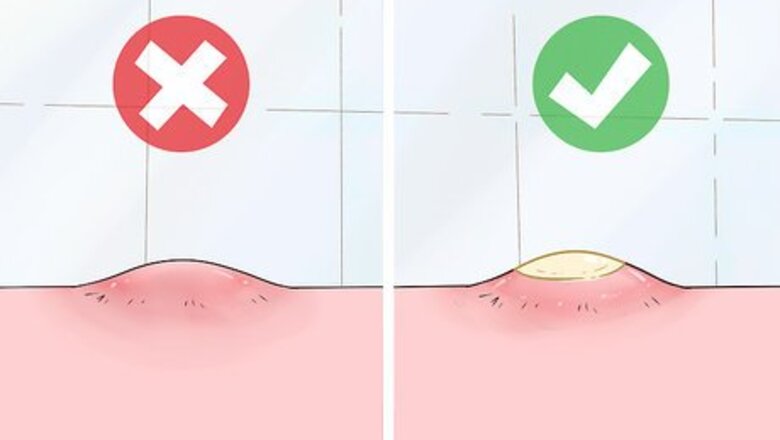
views
X
Expert Source
Paul Friedman, MDBoard Certified Dermatologist, American Board of Dermatology
Expert Interview. 8 April 2020.
Draining a Pimple with a Warm Compress
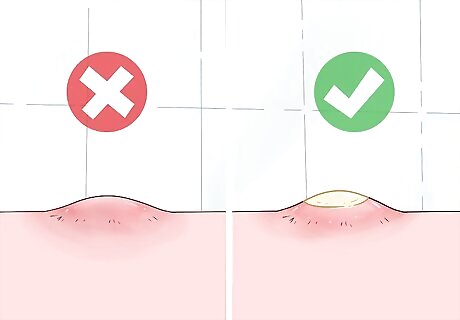
Wait until the pimple is close to the surface. If your pimple is deep under the surface, trying to pop it will do more harm than good. Wait until you see a visible white or yellow head, which means that the infection is close to the surface of your skin. Blackheads, which form when pores or hair follicles are clogged with hardened oil, can also sometimes be gently squeezed out with a warm compress.
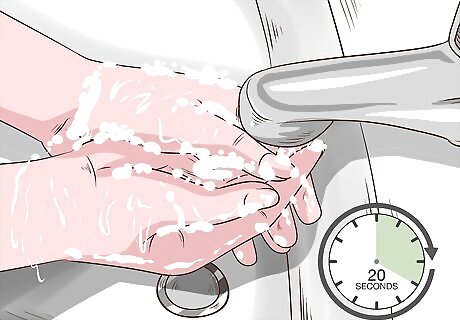
Wash your hands to get rid of dirt and germs. Before trying to pop the pimple, wash your hands thoroughly with warm water and soap. This will help prevent you from contaminating the area and creating a worse infection.Tip: There’s no need to use an antibacterial soap. Research shows that regular hand soap is just as effective at washing away germs and is less likely to create antibiotic-resistant strains of bacteria. Wash your hands for at least 20 seconds, and make sure to wash every surface of your hands, including under your fingernails. Rinse your hands carefully and dry them on a clean towel when you’re done.
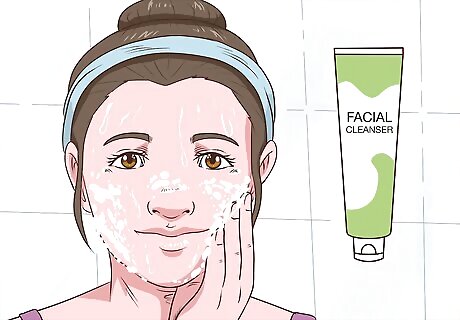
Clean your face with cleanser and warm water. After washing your hands, wash your face with warm water and the facial cleanser of your choice. Ideally, use a cleanser that is designed for oily skin so you can get rid of extra oil and grease as well as dirt and bacteria on your skin. Look for cleansers that are formulated without dyes or perfumes, since these can irritate your skin and make acne worse.
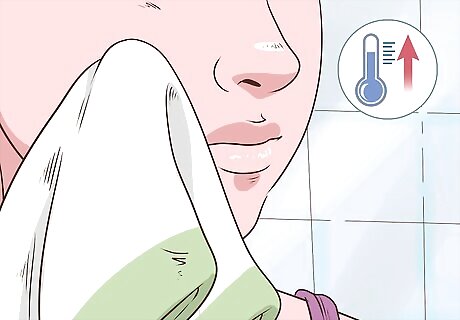
Press a warm washcloth against the pimple to drain it. Once your skin is clean, soak a washcloth in warm water. Gently press it against the pimple to soften your skin and open your pores. If the pimple is ready to drain, the warm compress should encourage it to do so. If the pimple doesn’t drain easily when you apply the washcloth, you may need to wait another day or 2 and try again. However, some dermatologists recommend using a warm compress for 15 minutes a day, 3-4 times daily until the pimple drains. If you feel pain when you apply the compress, stop and call your doctor. This may be a sign that you have a deeper infection that needs professional treatment.
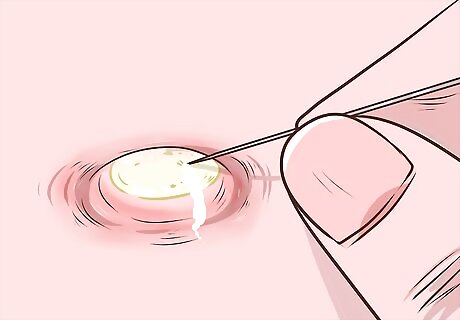
Puncture the pimple with a needle if a compress doesn’t work. If you’re sure a pimple is ready to pop but you aren’t having much luck with the washcloth method, you can also try gently lancing the pimple. After washing your hands and face, take a pin or needle and disinfect it by passing it through the flame of a lighter. Carefully poke the head of the pimple to puncture it. Try gently pressing on the area around the pimple with a damp washcloth after puncturing it to help it drain completely. If the pimple is close enough to the surface, this method shouldn’t hurt. Don’t keep trying this method if the pimple doesn’t open and start draining immediately when you puncture it.
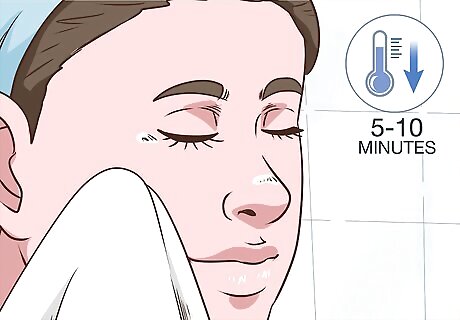
Put a cold compress on the pimple after it drains. Take a clean washcloth and dampen it with cold water. Once you’re pretty sure the pimple is empty, gently wipe the area clean. Hold the cold washcloth against the spot for 5-10 minutes to help prevent swelling and pain. A good rule of thumb is to put the cold washcloth on as soon as you start to see any blood coming out of the pimple.
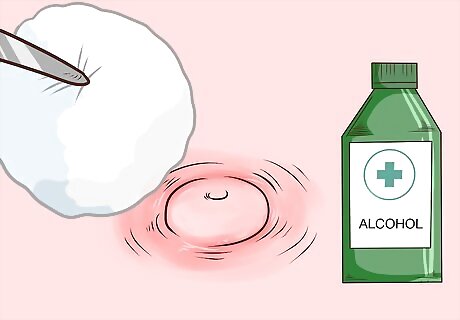
Disinfect the area with rubbing alcohol. After keeping the cold washcloth on for a few minutes, take a cotton swab or piece of clean gauze and use it to apply a little rubbing alcohol to the pimple. This will kill any lingering germs and help dry out the pimple, which should encourage faster healing. You can also use a first aid alcohol wipe or prep pad if you have one.
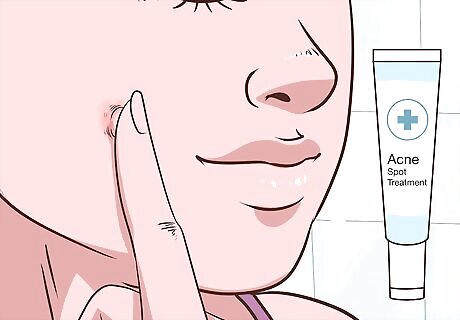
Treat the drained pimple with a salicylic acid spot treatment. Finish up by applying an acne spot treatment, such as Murad Blemish Control Rapid Relief or Clean & Clear Advantage Acne Spot Treatment. These treatments can help prevent inflammation and keep the pimple from returning. For best results, continue to apply the spot treatment over the next few days until the blemish heals up. Follow the directions on the package to determine how much to apply and how often.
Trying Alternatives to Popping
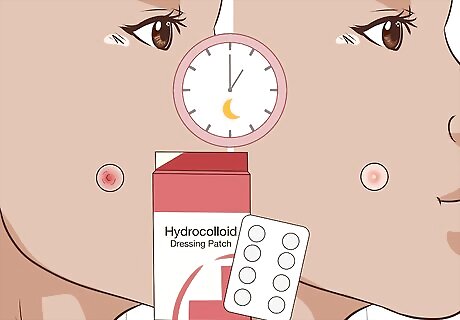
Use a hydrocolloid dressing to reduce swelling overnight. If your pimple is red and inflamed but not ready to pop, a hydrocolloid dressing can help calm it quickly. Put the hydrocolloid bandage on your pimple overnight to minimize inflammation and help absorb excess oil and pus. Hydrocolloid dressings are the same type of rubbery bandage that are sometimes used to treat blisters. You can find them in your local pharmacy or online. This treatment won’t heal your pimple overnight, but it will make it a little less obvious. Use the treatment for a few days to help your pimple heal up completely.
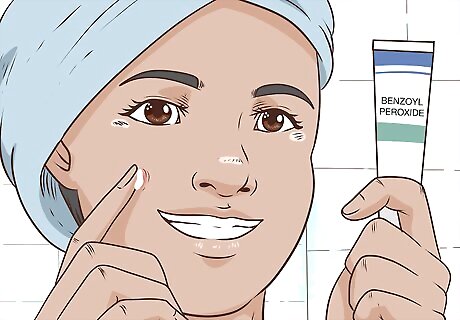
Try a spot treatment to dry out your pimple. Acne spot treatments can help dry out pimples and reduce inflammation to promote faster healing. They are also formulated with medications that help kill the germs that cause pimples to form. While these treatments won’t heal a pimple instantly, they can help reduce its appearance and encourage it to heal up more quickly. Look for acne spot treatments containing ingredients such as: Benzoyl peroxide Salicylic acid Sulfur
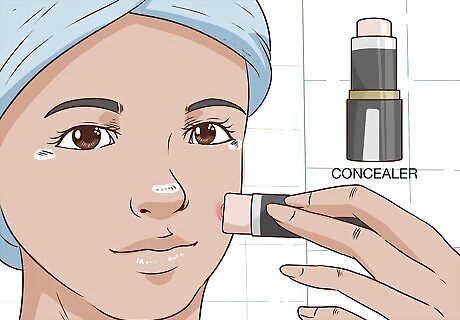
Hide obvious pimples with concealer. While it won’t actually get rid of your pimple, a little concealer or coverup can make a pimple a lot less noticeable. Dab the concealer on the spot and gently pat it to blend it in with the surrounding skin.Tip: Some concealers are formulated with acne-clearing medications, such as salicylic acid. Look for a combination concealer and acne treatment product to hide your pimple and help heal it at the same time! A concealer with a green tint can help offset the redness of the pimple. Before applying the concealer, wash the affected area to remove grease, dirt, and germs. You can also make the concealer more effective by combining it with other treatments. For example, use a hydrocolloid patch overnight to reduce inflammation, then put on the concealer in the morning.
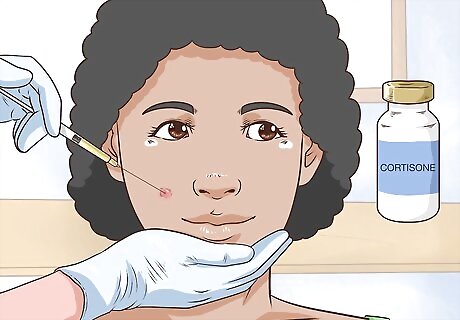
See a doctor for a cortisone injection if you need a quick fix. It can take weeks for a pimple to surface and become ready to drain. If you just can’t wait that long, a cortisone injection can help it heal up in a matter of hours to a couple days. Talk to your doctor about getting a cortisone treatment, or ask for a referral to a dermatologist who can do it. A dermatologist can also recommend treatments to prevent future outbreaks.
Treating a Pimple While It’s Deep
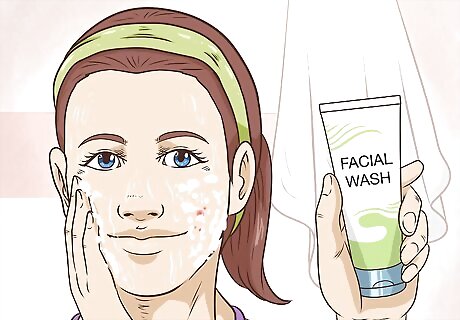
Wash your face to remove germs and grime. Any buildup of dirt and grease on your face can make your acne worse. Before applying any kind of treatment to a pimple, wash your face with warm water and a gentle facial cleanser. Don’t scrub the area, since this could cause inflammation and make the pimple worse.
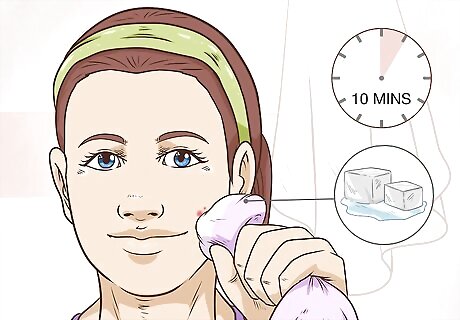
Put an ice pack on the pimple to reduce swelling. As soon as you notice a pimple starting to form, take an ice pack or an ice cube wrapped in a paper towel and apply it to the area for 10 minutes. Take a 10-minute break, then apply the ice again for another 10 minutes. Keep ice on the spot for a total of 30 minutes. Icing the area will help calm inflammation and reduce pain. Repeat this treatment occasionally over the next few days, or until the pimple comes to the surface.
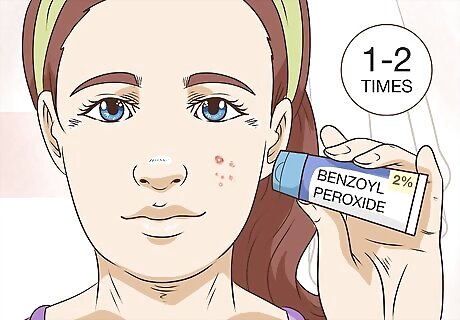
Apply a benzoyl peroxide spot treatment to kill acne germs. While you’re waiting for the pimple to surface, apply a 2% benzoyl peroxide spot treatment to the area 1-2 times daily. Use a very thin layer to prevent irritation to the skin. This treatment will help kill acne-causing bacteria and encourage the pimple to heal.Warning: Some people can have severe reactions to benzoyl peroxide. Stop using it and get medical attention if you experience symptoms such as burning, pain, blistering, redness, or swelling in the area where you applied the medication. Benzoyl peroxide can stain fabric, so avoid letting it come into contact with your clothing. Keep applying this treatment until the pimple heals up on its own or a whitehead forms on the surface.

















Comments
0 comment